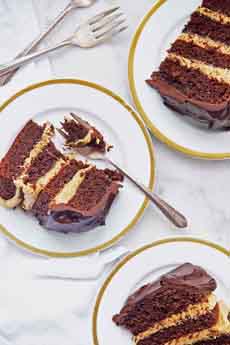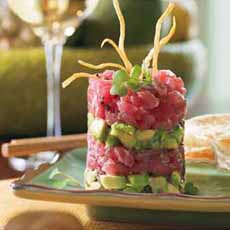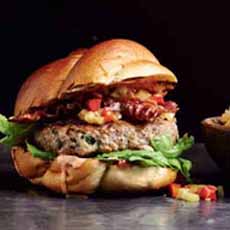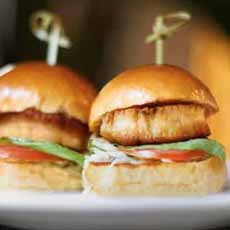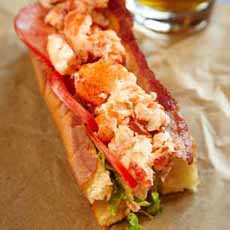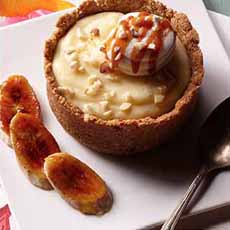|
National Ranch Dressing Day is March 10th.
In the category of bottled dressing, Ranch surpassed the previous favorite, Italian dressing, as America’s favorite—way back in 1992.
Here’s something most people don’t know: Ranch is buttermilk dressing, a popular dressing that originated in the southern U.S. in the 1800s or earlier.
By the 1980s, buttermilk had long fallen out of fashion; so old-fashioned buttermilk dressing was commercially rebranded to Ranch.
Why ranch? The name came from the buttermilk dressing served at Hidden Valley Ranch, a dude ranch in the Santa Ynez mountains, near Santa Barbara, California. It was so popular that guests asked to buy it; and sales slowly expanded until the dressing caught the attention of big-company executives.
Ranch dressing is made from buttermilk, mayonnaise, seasonings (black pepper, garlic, ground mustard seed, lemon juice, paprika) and herbs (chives, parsley, and dill). Sour cream or yogurt are sometimes used for all or part of the buttermilk or mayonnaise.
Here’s more of the history of buttermilk dressing.
And, a recipe for homemade ranch dressing.
RANCH DRESSING: A CULINARY CANVAS
“People are passionate about ‘their’ ranch [dressing],” says Andrew Hunter in Flavor And The Menu, a magazine for chefs.
But even favorites can stand sprucing up. Where would we be if pizza had never gone beyond a fresh basil topping?
Hunter offers ways to make ranch dressing “fresh and unique, while staying true to its populist form.”
1. Stir in other ingredients. Superiority Burger in New York, a vegetarian restaurants, serves tahini-laced ranch dressing. Nosh & Grog in Medfield, Massachusetts, seasons its shoestring fries with Spanish piment d’Espelette and ranch dressing powder.
But there’s so much more you can do with it. Start with these ideas:
Citrus seasoned ponzu and seasoned rice vinegar introduce a hint of umami and elevate the buttermilk and herbs.
Diced cucumbers and tomatoes create “relish” ranch.
Crispy crumbled bacon, smoky paprika and tomato paste put some “cowboy” on the ranch.
Wasabi, pickled ginger and avocado move it toward a Japanese ranch.
Jalapeño and cilantro turn it into Mexican ranch (photo #3, recipe).
Sriracha or gochujang add a spicy or fermented flavor.
Dots of flavored olive oil, like basil, chile or garlic, add a hit of flavor when dipping (photo #2).
Frozen blueberry purée, lemon juice and Parmesan make a kid-friendly dip.
2. Use fresh dairy (photo #1). Many chefs and home cooks use powdered ranch dressing. But blend fresh, ice-cold buttermilk into the powdered ranch. To make a richer, thicker version, add an equal part of sour cream or Mexican crema. For a more gourmet version, stir in a spoonful of crème fraîche or mascarpone.
3. Add fresh herbs. The herbs already in ranch dressing are dried parsley, chives and dill. Supplement those with chopped fresh versions of the same herbs. Or, augment the standard herbs with incremental fresh herbs such as basil and tarragon.
|
|
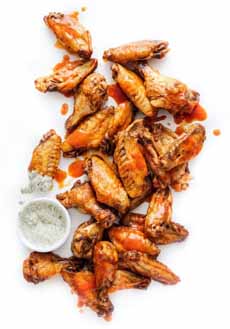
[1] Add fresh buttermilk to packaged mixes (photo courtesy Good Eggs).

[2] Add fresh herbs. In addition to fresh dill, this ranch is sprinkled with chile oil (photo courtesy Chobani).

[3] Switch out the classic chives-dill-parsley for jalapeño and cilantro. Here’s the recipe from Melissa’s Southern Style Kitcen.
|
4. Make it frothy. For dipping, or over fresh greens for dressing, store a pan of ranch dressing in an ice bath and pulse it with an immersion blender before ladling it into a cup or bowl.
BEYOND SALAD DRESSING
Use ranch dressing:
As a dip for chips and pretzels.
As a dip or sauce for fried food: chicken fingers, French fries, fried mushrooms, fried onion rings, fried pickles, fried zucchini, hush puppies, jalapeño poppers.
As a condiment or sauce for baked potatoes, burgers, casseroles, chicken wings, pizza, tacos, wraps and other sandwiches; and with seafood such as Arctic char, lobster, salmon and shrimp.
|






